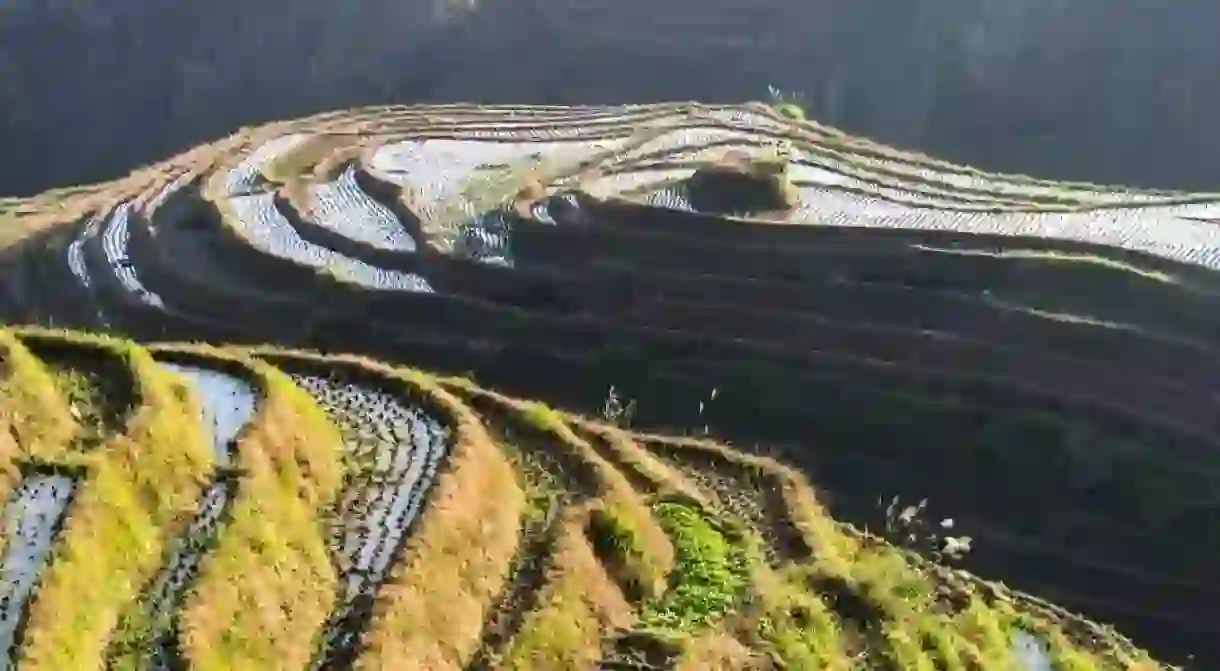The Most Enchanting Towns in Guangxi

These five dreamy ancient towns in Guangxi exude charm. Some are speckled with karst mountains, others are known for picturesque ancient cobblestone streets, and all have a local population that will enchant visitors.
Xing’an
This 2,000-year-old town was once a booming trade center, thanks to the 37-kilometer Lingqu Canal that runs through it, connecting the Xiangjiang and Zhujiang Rivers. Sure, it’s sleepier now, but there’s still plenty to do. Walk down Water Street and pop into art studios, music stores, and visit the various bridges and pavilions. When you tire of shopping and leisurely strolling, remember that Xing’an is also a jumping-off point for high-altitude adventure. Just 50 kilometers from downtown sits Maoer Mountain, the highest peak in South China.
Fuli
This 800-year-old town is a haven for traditional artists. Here, craftsmen create elaborately-painted paper fans, ranging from sizes portable in purses to those that could cover a whole wall. Many depict the regional flowers, karst mountains, river scenes or have Chinese characters written in broad pen strokes across the folds. Once you’ve had your fill of art, check out the ancient architecture, meander along the Li River, or hike up Feifeng, Parrot or Horse Hill.

Ping’An
Ping’An, one of the three towns considered part of the Longji Terraced Fields Scenic Area in Longsheng County, is easily the most captivating of the lot. From the gate, take the steep cobblestone steps past the shopping area up into the town, where you’ll find family homes sandwiched between restaurants and hotels atop the misty rice terraces. Get yourself some rice wine (your hotel owner probably makes some or at the very least knows a guy) and take one of the trails upwards to watch the sunset paint the water on the terraces shades of pretty pastels.

Jiantouzhou
Officially, the national flower of China is the plum blossom, but a walk through this 1,000-year-old town would have you believing it was water lilies. They’re everywhere. In the ponds, painted on walls, and used in a myriad of art forms all over town. Explore the cobblestone streets, snack on dried meats, and see if you can get some local men to teach you how to play mahjong.

Daxu
Once upon a time, Daxu was a hub of trading (its name literally translates to “big market”). You can still see some of the vestiges from when the town was booming on the two-kilometer long street (the only street in town, really) that runs parallel to the Li River. The stone street is flanked with two-story wooden homes festooned with red lanterns, with the bottom floor of many being repurposed into handicraft shops.














